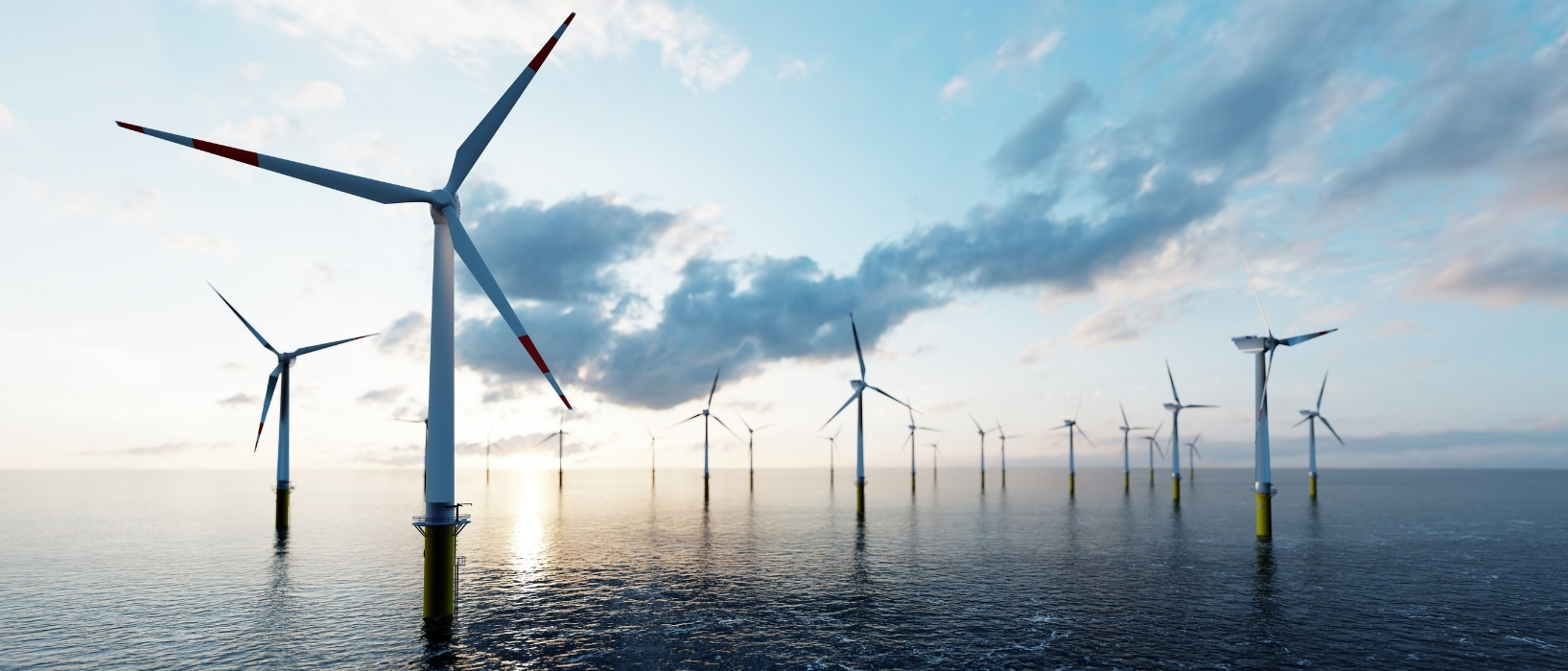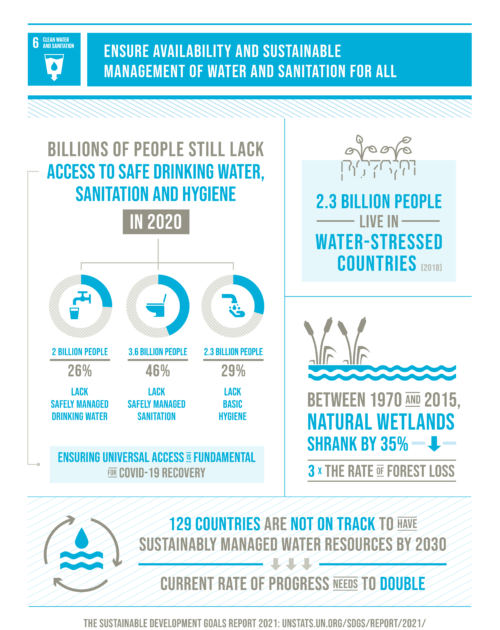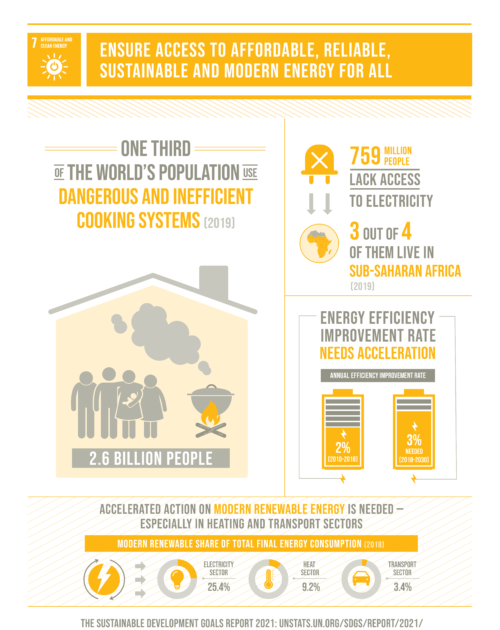
Play it Green is counting down the days until the United Nations Climate Change Conference, COP26, by looking at their Sustainable Development Goals.
Today, we talk about Goals 6 and 7, to provide safe water and clean energy to all.
Currently, billions of people around the world are living without access to safe drinking water and sanitation services.
Lack of access to clean water and safe sanitation services is a huge issue, contributing massively to the spread of disease. In the past 18 months, this has also left many particularly vulnerable to Covid-19.
Additionally, while the number of people with access to clean water grew by 2 billion between 2000 and 2020, the stress on our water supply is only increasing.
This is, in part, because our water usage is increasing at double the rate of our population.
It’s not only water stress that is an issue. There are also challenges because of rising levels of water pollution, the destruction of water ecosystems, and climate-related droughts.
With inland and marine wetlands declining by 35% between 1970 and 2015, three times the rate of forest loss, work to protect and restore these areas must be massively accelerated.

Efforts towards meeting Goal 7, to provide affordable, sustainable, and reliable energy to all, have made significantly more progress.
As of 2019, global access to electricity was at 90%, increasing from 83% nine years prior in 2010.
This is promising, but it is estimated by 2030, the year the target is set, 660 million people will still be living without access to electricity.
Without it, women and girls have to spend hours fetching water, clinics cannot store vaccines, and people cannot run businesses.
Likewise, there has been slow progress towards providing clean cooking solutions, particularly in low-income countries.
This affects not only the environment but also human health, with nearly a third of the world’s population being exposed to harmful household air pollution.
Another major challenge worldwide is to make our energy use sustainable. The current rate of countries switching to renewable sources such as wind, solar, and hydroelectric is way too slow.
Between 2010 and 2018, the share of renewables in total energy consumption only increased from 16.4% to 17.1%.
When looking specifically at renewable sources using modern technology, these numbers are even worse, remaining below 11% in 2018.
The worlds continued reliance on fossil fuels is damaging our planet, and countries worldwide need to make a concerted effort to invest in sustainable alternatives.

It’s not all bad news. Countries around the world are becoming increasingly focused on switching to renewables, with many even committing to new net-zero targets in the run-up to COP26.
Additionally, while the main goals may not be met by the 2030 target, many of the key indicators of their progress towards them are trending in a positive direction.
For example, one key way to reduce the stress on our water supply is by increasing how efficiently we use it, and so it is measured as a key indicator of progress towards Goal 6.
While the goal will not be met, there has been some good news in this specific area, with a rate increase of 10% in just three years between 2015 and 2018.
It’s not only world leaders and governments who can make a difference in achieving these targets, either. You can help work towards both of these goals without even having to leave your home. All you have to do is reduce the amount of water and energy you use.
This includes switching off a plug when you’re not using it, choosing to airdry your clothes over using a machine, or opting for a quick shower instead of a bath.
If we all make some small changes then, together, we can make a difference.